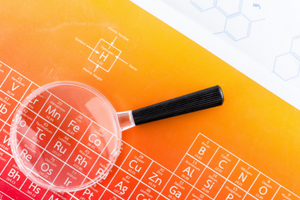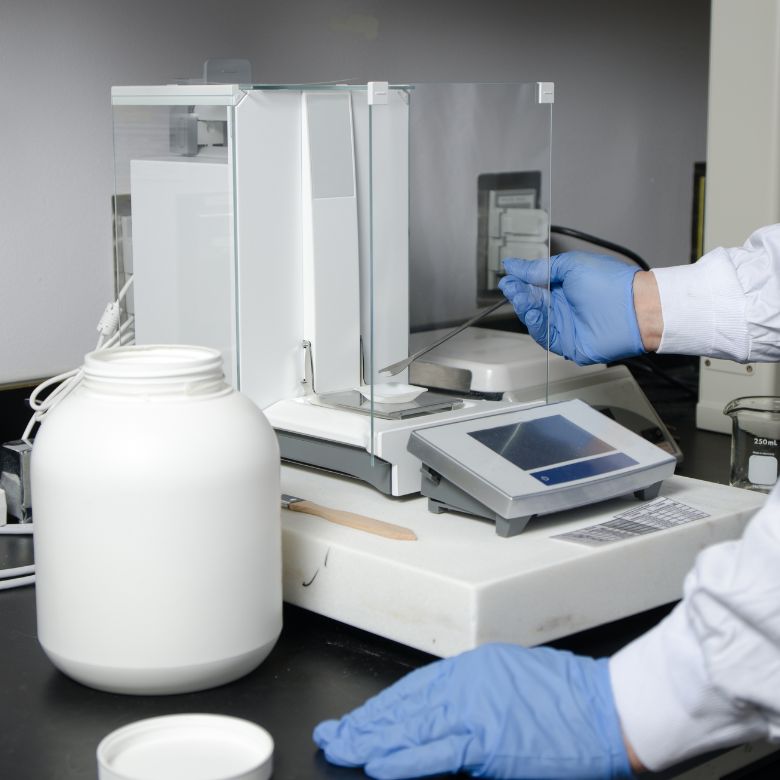The concept of molecular mass, just like the concepts molar mass and atomic mass or the structure of an atom, is another of the basics that must be learned to properly understand the world of chemistry. The molecules of chemical compounds have an extremely low mass. Testing the structure and properties of chemical elements and compounds is not so easy. If we know the molecular mass, we can not only specify the weight of a given element but also determine the mass ratios of elements in compounds or indicate their content by way of percentage.

What is molecular mass?
The molecular mass of a chemical compound is the total of atomic masses of the elements composing the compound. The molecular mass of a single molecule of a given chemical compound depends on which and how many atoms it consists of.
The molecular masses of elements and chemical compounds are expressed in units (u). Absolute atomic masses are extremely low, such as 10-24g. Therefore, to make the determination of molecular masses easier and avoid having to deal with unwieldy units, they have introduced a new atomic mass unit (u), which is defined as 1/12 of the mass of the carbon isotope nuclide 12C.
Atomic mass
To properly determine the molecular mass of a chemical compound, we must first know the atomic mass of the elements it consists of.
The mass of chemical elements is normally expressed in atomic mass units (u). What is important, most chemical elements that exist on the Earth are mixtures of several isotopes. Isotopes are variants of the same chemical element which have a constant atomic number (their nuclei contain the same number of protons) but differ in mass number (have different numbers of neutrons). When determining the atomic mass of a single chemical element, we thus have to consider the percentage of isotopes of that element.
Atomic mass is a unique feature of each element. Importantly, there are no two chemical elements with the same atomic mass. For this reason, this property can be utilised to identify elements. The atomic mass of each element may be read out from the periodic table.
Molecular mass of elements
Some chemical elements, such as nitrogen, hydrogen, oxygen, fluorine, bromine, iodine or chlorine, exist in the form of diatomic molecules. They do not exist as single atoms. In this case, it is appropriate to use the term ‘molecular mass of an element’.
How do we determine the molecular mass of chemical elements and compounds?
To properly determine molecular mass, whether of elements or compounds, we must first know the molecular formula. Then, using the molecular mass and chemical formula, we can, for example, establish the share of each element in the mass of the whole molecule.
If we deal with a diatomic element, the determination of its molecular mass is based on the atomic mass of a single atom of that element. The value should be divided by two. For instance, the molecular mass of nitrogen (N2) is 28 units, as the mass of a single atom of nitrogen is 14 units.
A similar procedure is used for chemical compounds. How to establish their molecular mass?
- Determine the chemical formula of the compound whose molecular mass you wish to define,
- specify the elements included in the compound and indicate the quantity of each element,
- determine the atomic masses of each element,
- if the molecule contains more than one atom of a specific element, multiply its atomic mass by that value,
- add up the atomic masses of all elements.

Molecular mass vs. molar mass
The method of calculating the molecular mass of chemical compounds is also used to determine their molar mass. Molar mass is commonly used for stoichiometric calculations, as using the mole as the unit makes it possible to apply the process in a macro-scale.
The mole is the units of the amount of substance, a basic unit in the SI system. One mole equals 6.022141*1023 elements (which can be atoms, ions or molecules).
Molar mass is the mass of one mole of a specific substance. It has the same numeric value as the molecular mass, but we must remember that it has a completely different unit. While the molecular mass is expressed in units (u), the molar mass of a compound is expressed in grams per mole (g/mol). In addition, the molecular mass refers to the mass of a single molecule. It is different in the case of molar mass. The molar mass also expresses mass, but in reference to a single mole (6.022141*1023 elements).
What do we need molecular mass for?
The molecular mass of a chemical compound allows us to:
- determine the mass of a given chemical compound. The value in units can be converted to grams if we know the following dependency: 1 u = 1.66 * 10-24 g;
- determine the mass ratio of each element included in the chemical compound. Mass ratio is defined as the ratio of atomic masses of the elements contained in the compound;
- calculate the mass share, that is to say, the percentage of elements in the chemical compound. It is calculated based on the ratio of atomic masses in the smallest structure of a chemical compound to the molecular mass of that compound, multiplied by 100%.